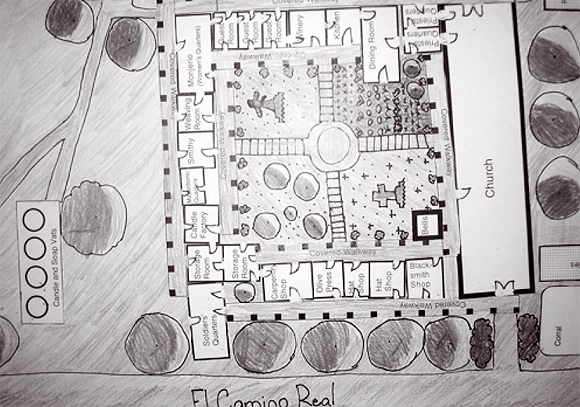
arcCA: Tell us about what you’re doing.
Alison Quoyeser: I teach fourth grade at Ross School, a high-achieving school in a high socio-economic community in Marin County. I originally intended to teach in a low-income, inner-city, ethnically diverse school, but, when I was looking for jobs, no such districts were hiring.
arcCA: How have your architectural education and experience contributed to your ability to teach?
AQ: Well, I know that my background is one reason I was hired. Ross appreciates interesting, real world experience. For instance, we have another architect, a lawyer, and an accountant on the teaching staff.
arcCA: What values led you into teaching?
AQ: I was always a people person. In fact, before architecture, I considered becoming a clinical psychologist. But I didn’t want to be a teacher, because 1) so many of my family members are teachers; and 2) I wanted a “man’s job.” I liked being an architect, but I always felt anxious that I wasn’t catching on fast enough learning how to put buildings together. Also, I didn’t have the personality or talent to be a head designer. (I was most successful in the design development phase of projects.) My bosses appreciated me for being a good team member and for drawing well (this was before the advent of the age of computers at every desk), but I didn’t like the idea of being mediocre in my field. When I finally realized I wanted to become a teacher, I knew that I could be excellent in my job.
arcCA: Do you think of your teaching as an extension of architectural practice, a critique of it, or something entirely unrelated?
AQ: It’s a little bit of a critique, since I prefer to teach about caring for the natural world rather than to work with developers to “develop” the natural world. On the other hand, many skills I learned as an architect serve me well as a teacher. Architects tend to be generalists—“Renaissance man” (or woman) kinds of folks—just as elementary teachers have to be. We like hands-on, project-based learning, which is the approach that turns on most kids. My graphics skills come in handy for bulletin board design, stage design, art projects, worksheet graphics, and so on. And then I was one of two teachers to serve on the Facilities Design Committees for our middle school (built) and our totally new school (project on hold due to lack of community support). The kids and their parents are impressed that I am an architect, and I think that contributes to my good reputation in the community.
arcCA: What insights does your current perspective offer on architectural practice?
AQ: I think I would have felt more confident as an architect if I had had more exposure to construction, looking at the way things go together and discussing how and why to detail buildings a certain way. Recently my husband and I completed the construction of our dream house, and I learned a tremendous amount about design, working drawings, construction, and project management by being involved from start to finish. I think architecture students could benefit greatly by following a local design/construction project from start to finish.
Originally published 2nd quarter 2005, in arcCA 05.2, “Other Business.”





